Powder blue cichlid - Pseudotropheus socolofi
Scientific name: Pseudotropheus socolofi
Common name: Powder blue cichlid
Family: Cichlidae
Usual size in fish tanks: 10 - 11 cm (3.94 - 4.33 inch)
014
Recommended pH range: 7.5 - 8.9
Recommended water hardness: 12 - 25°N (214.29 - 446.43ppm)
0°C 32°F30°C 86°F
Recommended temperature range: 23 - 27 °C (73.4 - 80.6°F)
The way how these fish reproduce: Spawning
Where the species comes from: Africa
Temperament to its own species: aggressive/territorial
Temperament toward other fish species: aggressive/territorial
Usual place in the tank: Bottom levels
Origin
This species of cichlid originates from Lake Malawi in the East African Rift Valley, specifically along the coast of Mozambique. Lake Malawi is known for its diverse cichlid population, and the Powder Blue Cichlid is a striking example of the unique species found in this region.
Lifespan
The Powder Blue Cichlid’s lifespan is typically between 5 and 8 years, provided they are given the proper care and a well-maintained environment in the aquarium.
Description
The Powder Blue Cichlid is a popular choice among fish keepers, particularly those new to caring for Malawi species. They exhibit a vibrant blue coloration, which can vary in intensity among individuals. Some specimens might lack the characteristic black stripes on their dorsal fin, while others might display them prominently. The males are generally brighter blue, often appearing shiny whitish-blue, while females have a paler, duller blue coloration.
This species can be aggressive, especially towards its own kind, particularly males toward other males. It is recommended to provide plenty of hiding places in the tank, using rocks to create gaps and crevices. These hiding spots are essential for badgered females pursued by males and for non-dominant males within the colony.
Tank Setup
When setting up an aquarium for Powder Blue Cichlids, ensure a large enough tank with plenty of rock formations to provide hiding places. The water should be maintained at a temperature range of 23 - 27°C (73.4 - 80.6°F), with a pH range of 7.5 - 8.9. Hard water is preferred, with a hardness (dGH) of 12 - 25°N (214.29 - 446.43ppm). Proper filtration and regular water changes are crucial to maintain the water quality.
Food
Powder Blue Cichlids are omnivores, and their diet should primarily consist of plant-based foods, with occasional live or frozen foods as treats. They will accept various store-bought foods, including pellets, flakes, and veggie wafers. To ensure their health, it's recommended to feed them a balanced diet, including spirulina-based foods and vegetables like blanched spinach or peas.
Sexing
There are subtle differences between males and females. Males tend to have a brighter blue color, often appearing shiny whitish-blue, while females exhibit a paler, duller blue coloration. Males also have "dummy egg spots" on their anal fins, which play a role in the breeding process.
Breeding
Breeding Powder Blue Cichlids can be challenging. To increase the chances of success, keep only one male in the breeding tank and outnumber him with at least 4 females. This strategy prevents any single female from being overly harassed by the male. Powder Blue Cichlids are mouthbrooders; the female holds the eggs and later the fry in her mouth for up to 3 weeks. She may produce up to 60 fry in one brood.
It's crucial to minimize stress for the holding female; otherwise, she might "spit" the fry prematurely, putting them at risk of being eaten. Keeping the lighting dim and providing a stress-free environment is key. The female will release the fry when she feels it is safe. Initially, she may release and retrieve them several times, allowing the fry to return to the safety of her mouth at the slightest hint of danger.
Thanks to Eric and Marwin for pictures.




 Thread-finned
Thread-finned 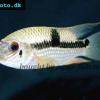 Acara
Acara  Yellow
Yellow  Patrick's
Patrick's  Blue
Blue  Green
Green 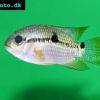 Acara
Acara  White
White  Compressed
Compressed 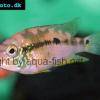 Pastel
Pastel  Midas
Midas  Red
Red  Bluemouth
Bluemouth  False
False 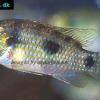 African
African  Agassiz's
Agassiz's  Banded
Banded 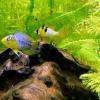 Yellow
Yellow  Cockatoo
Cockatoo  Blue
Blue  Blackstripe
Blackstripe  Highfin
Highfin  Redstripe
Redstripe  Threadfinned
Threadfinned  Macmaster’s
Macmaster’s 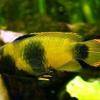 Panda
Panda  Norbert’s
Norbert’s 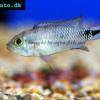 Blue
Blue  Thin-line
Thin-line  Three-striped
Three-striped  Viejita
Viejita 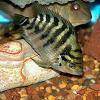 Flier
Flier  Archocentrus
Archocentrus  Convict
Convict  Seven
Seven  Spiny
Spiny  Oscar
Oscar  Sunshine
Sunshine  Chitande
Chitande  Firebird
Firebird  Midnight
Midnight  Lake
Lake  Sunshine
Sunshine  Aulonocara
Aulonocara  Nyasa
Nyasa 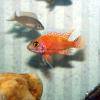 Ruby
Ruby  Grants
Grants  Aulonocranus
Aulonocranus  Chameleon
Chameleon  Benitochromis
Benitochromis  Orinoco
Orinoco  Yellow
Yellow 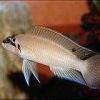 Brichard’s
Brichard’s  Guenther’s
Guenther’s  Southern
Southern  Cichla
Cichla 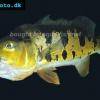 Peacock
Peacock  Chiseltooth
Chiseltooth  Bolivian
Bolivian  Red
Red  Many-pointed
Many-pointed  Jack
Jack  Red
Red  Three
Three 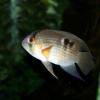 Keyhole
Keyhole  Azureus
Azureus  Red
Red  Jackson’s
Jackson’s  Crenicichla
Crenicichla  Honduran
Honduran  Blue-eye
Blue-eye  Afra
Afra 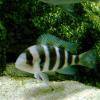 Frontosa
Frontosa  Slender
Slender  Malawi
Malawi  Chequerboard
Chequerboard  Checkerboard
Checkerboard  Malawi
Malawi  Ectodus
Ectodus  Tanganyika
Tanganyika  Canara
Canara  Green
Green  Rostratus
Rostratus  Pearl
Pearl 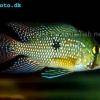 Geophagus
Geophagus  Yellowhump
Yellowhump  Suriname
Suriname  Redhump
Redhump  Red
Red  Dority’s
Dority’s  Argentine
Argentine 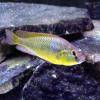 Burton’s
Burton’s  Victoria
Victoria 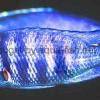 Haplochromis
Haplochromis  Jewel
Jewel  Banded
Banded 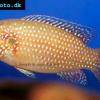 Lifalili
Lifalili  Lowland
Lowland  Texas
Texas  Pantano
Pantano  Severum
Severum  Banded
Banded 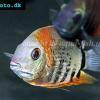 Severum
Severum  Rainbow
Rainbow  Parrot
Parrot  Chocolate
Chocolate  Brown
Brown  Marlieri
Marlieri  Golden
Golden  Striped
Striped  Masked
Masked 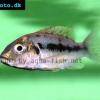 Konye
Konye  Blue
Blue  Trewavas
Trewavas  Electric
Electric  Dwarf
Dwarf  Redbreast
Redbreast  Lamprologus
Lamprologus  Gold
Gold 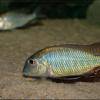 Greenface
Greenface 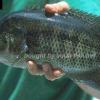 Mayan
Mayan  Aurora
Aurora  Blue
Blue  William’s
William’s 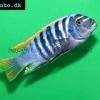 Zebra
Zebra  Malawi
Malawi  Blue
Blue 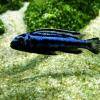 Blue
Blue  Mbuna
Mbuna  Parallel
Parallel  Purple
Purple  Flag
Flag  Bolivian
Bolivian  Ram
Ram  Basket
Basket 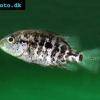 Haitian
Haitian  Zebra
Zebra  Striped
Striped  Neolamprologus
Neolamprologus  Brevis
Brevis  Fairy
Fairy 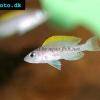 Neolamprologus
Neolamprologus  Cylindricus
Cylindricus  Hecq’s
Hecq’s  Neolamprologus
Neolamprologus  Lemon
Lemon  Mustax
Mustax  Daffodil
Daffodil  Six-bar
Six-bar  Five-bar
Five-bar  Marbled
Marbled 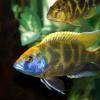 Giraffe
Giraffe  Blue
Blue  Sulphurhead
Sulphurhead  Wolf
Wolf  Jaguar
Jaguar  Blue
Blue  Marakeli
Marakeli  Madagascar
Madagascar  Pinstripe
Pinstripe  Pelmatochromis
Pelmatochromis  Kribensis
Kribensis 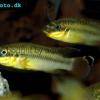 Striped
Striped  Red
Red  Deepwater
Deepwater  Fenestratus
Fenestratus  Nichols’
Nichols’  Southern
Southern  Bumble
Bumble  Demason’s
Demason’s  Slender
Slender  Red
Red  Mbuna
Mbuna  Malawi
Malawi  Kenyi
Kenyi  Altum
Altum  Angelfish
Angelfish  Angelfish
Angelfish 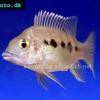 East
East  Juba
Juba  Earth
Earth 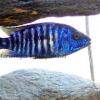 Electric
Electric  Azure
Azure 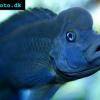 Lionhead
Lionhead  Discus
Discus  Blue
Blue  Red
Red  Zebra
Zebra  Brichard’s
Brichard’s  Blue
Blue  Firemouth
Firemouth  Zebra
Zebra  Yellow
Yellow  Blue
Blue  Dwarf
Dwarf  Blunthead
Blunthead 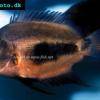 The
The  White
White  Twoband
Twoband  Fenestratus
Fenestratus  Window
Window  Tailbar
Tailbar  Black
Black  Redhead
Redhead 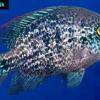 Oaxaca
Oaxaca  Xenotilapia
Xenotilapia